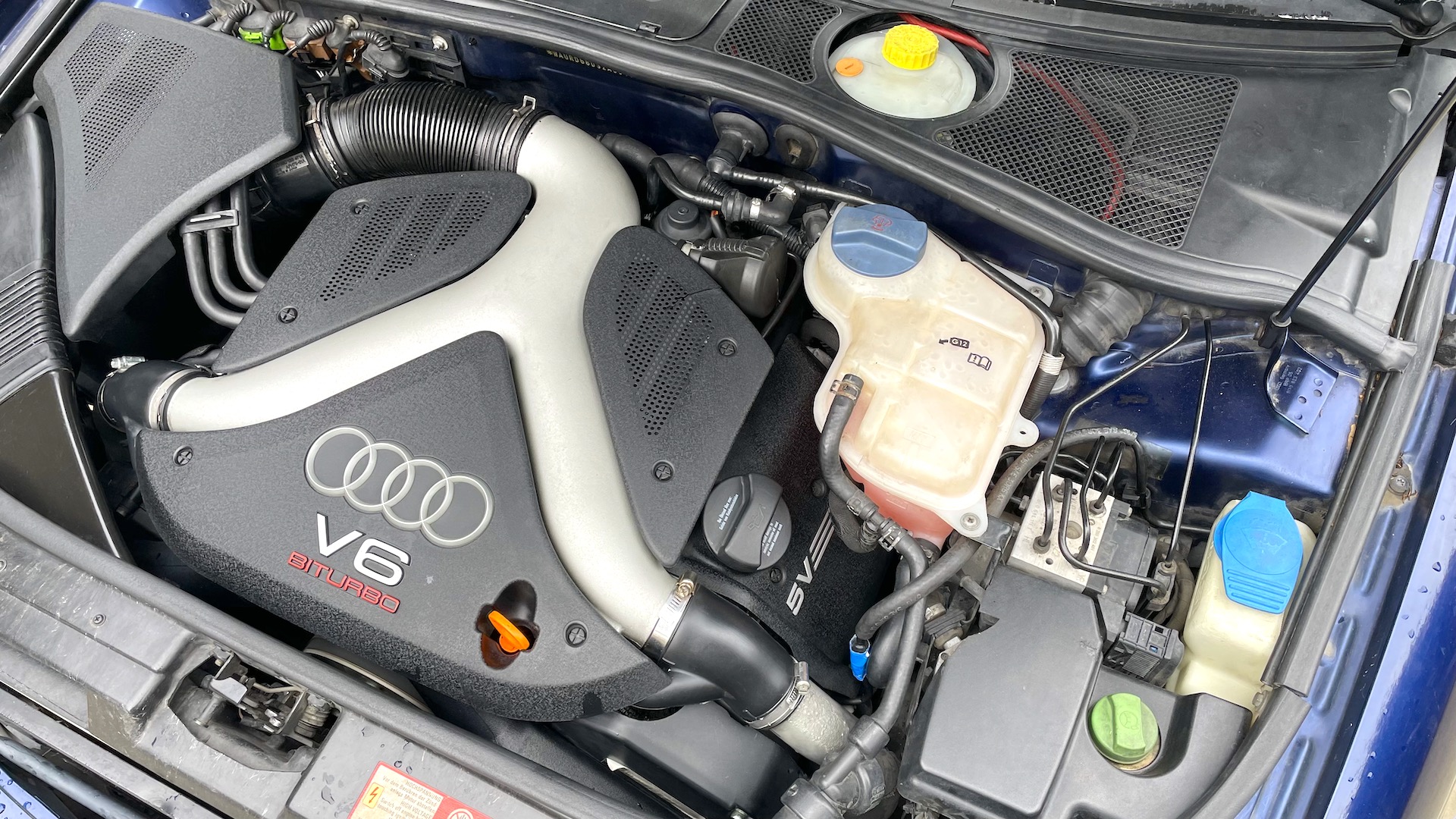

We may earn revenue from the products available on this page and participate in affiliate programs. Learn more ›
In the automotive realm, the word “leak” is often associated with a liquid not staying where it’s supposed to be. We’re used to hearing all about oil and coolant leaks and, God forbid, brake fluid leaks. But gases are very much a part of the equation as well.
Besides a leaky tire, the other most common form of an air leak is a boost leak. This doesn’t refer to the brake booster, but rather the pressured intake charge that turbocharged or supercharged (or both) vehicles produce, otherwise referred to as forced induction (FI).
Let’s discuss what a boost leak is, as well as what causes it.

Rooted in Forced Induction
To put it simply, a boost leak is when all measured air past the mass airflow sensor (MAF) isn’t making it to the finish line in the combustion chamber in a turbocharged or supercharged (or both) vehicle. Somewhere, particularly between the turbo and intake manifold, is letting precious, measured air out.
Non-forced induction vehicles develop intake air leaks as well, but they’re less common. Still, seals and clamps wear out, intake tubing incurs damage from heat or foreign elements, and so forth. Though, they’re less common as the intake path isn’t under stress by the forces of boost pressure, which is the compressed air charge that gives forced induction its power-bumping benefits.
Check out this guide for more on turbo terminology.
What Causes a Boost Leak?
The causes are generally simple but can be tedious to diagnose. A loosened clamp or coupler, cracked intake pipe, torn boot, poor vacuum connection, damaged air-to-air intercooler, and so forth give the boosted air a chance to escape.
The first step in determining the culprit is closely examining all of these components between the MAF and throttle body, which, depending on the layout of your car’s engine bay can be a little time-consuming. In my case, my 2002 Audi S4 has double the amount of piping, intercoolers, couplers, fasteners, and more as it’s a twin-turbo engine where the turbos are very far from each other on opposite cylinder banks.
It’s also just over 20 years old, which is more than ample time for all of these components to wear out or incur damage, so I’ve got my work cut out for me when it comes to hunting down leaks.

What are the Symptoms and Effects of a Boost Leak?
Because the engine isn’t getting the air it’s expecting, poor running is the first sign that your engine might have a boost leak. Essentially, the engine is planning for what it’s reading from the MAF, but then it doesn’t get it, so it starts freaking out and begins readjusting the air/fuel mixture on the fly, without enough hard data to create an efficient and ideal mix. Imagine all of the components that it controls at once: the injectors, throttle body, turbo wastegate, blow-off valve, and more.
This causes the engine to stumble and cough and will cause long-term damage—such as killing the turbo or turbos—if not remedied. It also causes a significant drop in fuel economy, a rough and shaky idle, and a significant loss of power.

How Do You Remedy a Boost Leak?
I’ll be writing a blog on this in the near future—spoiler alert: my old turbocharged Audi is suffering these symptoms as of this writing—but the first step for experiencing any rough running condition is to approach it with an open mind and diagnose.
Is there a check-engine light present? Are the spark plugs and other ignition components in good shape? Is there a common issue that haunts your particular car with symptoms that resemble a boost leak? Could one or more of the injectors be stuck open or not flowing properly?
In my case, some B5 Audi S4 enthusiasts say worn old ignition components could be the culprit. As could a coolant temperature sensor located towards the back of the engine, weirdly. I know, I thought this was strange as well, but boost leaks are very common on old Audis, so that’s what I’ll be investing the most time in.
Again, examining and checking every component between the MAF and throttle body is a good first step. Then, either building your own or buying a boost leak tester helps. These pressurize the system and allows you to look and listen for air leaks. Spraying soapy water on components while the car is either running, or the boost leak tester has the system pressurized, which helps as well.
Boost leaks don’t always trigger check-engine lights, either. Normally, a substantial error in the ignition system will, but dirty/old spark plugs might not. A dirty or clogged fuel filter won’t necessarily trigger a check-engine light, either (at least directly), but can cause similar rough running conditions.
Go Forth and Test
Boost leaks are a common problem on FI cars, and while they might start as minor inconvenient decreases in power, they should be remedied as soon as possible. Who wants to lose the horsepower they paid for, experience a significant and unnecessary drop in fuel economy, or have to replace a dead turbocharger?
Report back on your findings, too: do you have any experience with these pressurized annoyances?
More from The Drive
- My 2002 Audi S4 project is coming along nicely though still needs work (shocking)
- Here’s what to do if your car starts hydroplaning
- What’s an impact driver?
- Here’s the difference between diesel and gasoline